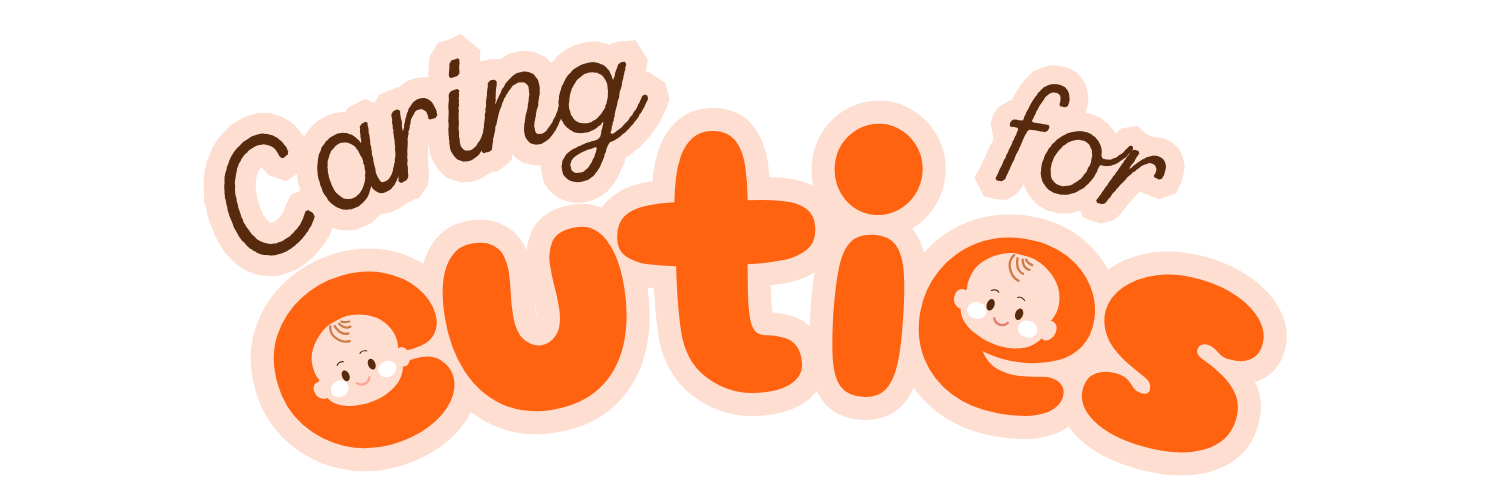Dealing with toddler tantrums can be tough for parents or caregivers. But, there are ways to handle these outbursts without losing your cool. We’ll look into the science behind toddler meltdowns and share seven effective techniques.
Ever wondered why toddlers have such intense emotional reactions? Is there a way to stop tantrums before they start? Get ready to learn how to stay calm and help your child through these tough times.

Key Takeaways
- Understand the science behind toddler tantrums and their developmental stages
- Implement proven strategies to prevent and manage tantrum episodes
- Learn effective communication techniques to connect with your frustrated toddler
- Develop coping skills and resilience in your child to navigate challenging emotions
- Confidently handle public tantrums with grace and minimize onlooker reactions
Understanding the Science Behind Toddler Meltdowns
As parents, we’ve all seen our toddlers have dramatic outbursts and tantrums. But what’s happening behind the scenes during these emotional meltdowns? Learning about the science of toddler emotional regulation helps us understand and handle these tough moments better.
Brain Development and Emotional Regulation
Toddlers are in a key stage of brain growth. Their prefrontal cortex, which controls impulses and emotions, is not fully developed yet. This makes it hard for young children to manage their strong feelings, leading to the tantrum triggers in toddlers we often see.
Common Triggers for Toddler Tantrums
- Fatigue or hunger
- Frustration over a task or desire
- Transitions between activities or routines
- Overstimulation from a busy environment
- Feeling misunderstood or ignored
Age-Related Behavioral Patterns
The way toddlers have tantrums changes with age. Younger toddlers (18-24 months) have more frequent but shorter tantrums. Older toddlers (24-36 months) have less frequent but longer meltdowns as they get better at controlling their emotions.
“Toddler tantrums are a normal part of development, but understanding the underlying science can help us respond with more empathy and patience.”
By knowing the brain and development factors, we can deal with toddler meltdowns with more understanding and kindness. This helps our little ones get through these emotional storms better.
Prevention: The First Line of Defense Against Tantrums
Stopping toddler tantrums is key to a peaceful home. Knowing what triggers them and using early steps can help a lot. Teaching good behavior and preventing tantrums are vital for a calm home.
Setting a regular routine is a great way to stop tantrums. Toddlers like knowing what’s next. Make sure they have enough time for eating, sleeping, and playing. Changes can upset them and cause tantrums.
- Maintain a consistent bedtime and wake-up schedule
- Incorporate regular mealtimes and snack breaks
- Plan for transitions between activities to avoid sudden changes
Also, making a calm space helps a lot. Less noise, a cozy spot, and calm activities help kids feel better.
| Tantrum Prevention Tip | Benefit |
|---|---|
| Establish a consistent routine | Provides predictability and reduces frustration |
| Offer calming sensory experiences | Helps the child self-soothe and regulate emotions |
| Praise and reward good behavior | Reinforces positive behaviors and encourages self-control |
Using these steps, parents can stop tantrums and make a happier home for everyone.
“The key to preventing toddler tantrums is understanding your child’s needs and creating an environment that supports their emotional development.”
Toddler Tantrum Solutions: Expert-Backed Strategies That Work
Dealing with toddler tantrums can be tough, but the right strategies can help. Experts say these methods are great for calming tantrums and teaching good behavior.
Implementing Consistent Routines
Keeping a regular schedule is key to handling tantrums. Toddlers like knowing what to expect, like meal times and bedtime. This makes them feel safe and less likely to have big meltdowns.
By following a routine, you help your toddler feel secure. This can make tantrums happen less often and be less intense.
Creating a Calming Environment
The place where your toddler is can affect how they feel. A quiet, calm space can really help during tantrums. Add soft lights, comfy textures, and gentle sounds to make it even better.
This kind of environment helps your toddler calm down. It makes it easier for them to feel better.
Using Positive Reinforcement
Positive discipline works well for toddlers. Rewarding good behavior with praise or small treats helps. This encourages them to handle their feelings in a better way.
By focusing on calm behavior, tantrums happen less. This makes life easier for everyone.
| Toddler Tantrum Strategies | Calm Toddler Tantrum Solutions | Positive Discipline for Toddlers |
|---|---|---|
| Consistent routines | Calming environment | Positive reinforcement |
| Identifying triggers | Soothing techniques | Emotional regulation skills |
| Proactive planning | Mindful parenting | Empathetic communication |
Using these strategies, parents can handle tantrums better. This creates a peaceful and loving space for toddlers.
The Power of Emotional Connection During Meltdowns
Dealing with a toddler’s emotional outbursts can be tough. But, keeping a strong emotional bond is key. This bond helps them feel supported and understood, leading to better emotional growth and strength.
During a meltdown, a toddler’s rational thinking is lost to their feelings. The best thing to do is to show compassion and accept their emotions. This helps them feel safe and secure, making it easier to solve problems later.
“The greatest gift you can give a child is your presence. When you’re fully present and attuned to their emotions, you’re communicating that their feelings matter and that they’re not alone.”
Building a strong emotional bond can also prevent meltdowns. Activities like reading, playing games, or spending quality time together help. These moments build their emotional strength and ability to control their feelings.
The power of emotional connection during meltdowns is huge. It creates a safe space for the child to deal with their feelings. By focusing on this connection, parents and caregivers can help toddlers grow emotionally. This prepares them for healthy relationships and well-being throughout their lives.
Effective Communication Techniques for Frustrated Toddlers
Dealing with toddler tantrums can be tough. But, using the right communication can help a lot. Understanding non-verbal cues, using the right words, and listening well are key. These steps help toddlers express their feelings better, leading to better toddler behavior management and toddler frustration solutions.
Non-Verbal Communication Methods
When a toddler is upset, they might not know what to say. That’s when non-verbal cues come in handy. A gentle touch, soothing eyes, and calm faces can make a big difference. They help a toddler feel understood, even when they can’t say coping with toddler anger.
Age-Appropriate Language Strategies
When talking to toddlers, keep it simple and clear. Stay away from long sentences or hard words. Use easy-to-understand words and short phrases. This makes toddlers feel like they’re being heard and helps them express their feelings better.
Active Listening Tips
- Make eye contact and maintain a calm, attentive posture.
- Paraphrase what the toddler is saying to demonstrate understanding.
- Validate the child’s feelings, using phrases like “I can see you’re feeling upset right now.”
- Offer empathetic responses that show you’re listening and care about their emotional state.
By using these toddler behavior management tips, we can create a safe space. Toddlers feel heard, understood, and can handle their big feelings with confidence.
Building Resilience: Teaching Coping Skills to Toddlers
Dealing with toddler tantrums can be tough for parents. But, building resilience and teaching coping skills can really help. It’s important to teach our little ones how to manage their toddler emotional regulation for their future well-being.
One key strategy is to have consistent routines. This helps toddlers know what to expect and reduces tantrums. Also, making a calm environment with soothing activities and positive feedback helps them control their feelings.
Teaching emotional intelligence is also vital. Through age-appropriate communication and listening, we help toddlers express their feelings in a healthy way. This improves their toddler emotional regulation and builds trust.
- Establish consistent daily routines to provide structure and predictability
- Incorporate calming activities and sensory experiences to help toddlers self-regulate
- Use positive reinforcement to encourage and reinforce desired behaviors
- Engage in open communication to help toddlers identify and express their emotions
- Teach age-appropriate coping strategies, such as deep breathing or creative expression
Building resilience in toddlers is a journey that needs patience, empathy, and flexibility. By teaching our little ones how to handle their emotions, we help them develop important coping skills. This sets them up for a lifetime of emotional well-being.

| Coping Skill | Benefits | Age-Appropriate Approach |
|---|---|---|
| Deep Breathing | Reduces stress, promotes relaxation | Encourage toddlers to “blow out the candle” or “smell the flower” |
| Creative Expression | Allows for emotional release, fosters self-awareness | Provide art supplies, encourage toddlers to draw or paint their feelings |
| Storytelling | Helps process emotions, develops language skills | Engage toddlers in stories about characters overcoming challenges |
“Resilience is not something that can be taught, it is something that is nurtured and developed over time.” – Dr. Russ Harris, Psychologist
Managing Public Tantrums with Grace and Confidence
Dealing with toddler tantrums in public can be tough. But, with the right strategies, parents can stay calm and manage the situation well. This section gives practical tips to help busy parents handle public meltdowns with confidence.
Quick Response Strategies
Having a plan when a tantrum happens in public is key. Try these quick strategies to calm the situation:
- Stay calm and speak softly. A gentle voice can help soothe your toddler.
- Move your child to a quiet place if you can. This helps them calm down.
- Give a favorite toy or snack to distract and calm your toddler.
- Let your child know you understand their feelings. Then, gently guide them away.
Handling Onlooker Reactions
Dealing with curious or judgmental stares can be stressful. Here’s how to handle it with grace:
- Don’t talk to onlookers or respond to their comments. Focus on your child.
- If someone gives unsolicited advice, politely say no thanks. Stick to your parenting plan.
- Remember, your child’s needs are most important. What others think doesn’t define your parenting.
Emergency Tantrum Kit Essentials
Be ready for unexpected tantrums with an emergency kit. It should have:
| Item | Purpose |
|---|---|
| Favorite toy or comfort object | Provides a familiar source of comfort and distraction |
| Healthy snacks | Helps regulate blood sugar and mood |
| Calming essential oils | Can be applied to the skin or inhaled to promote relaxation |
| Noise-cancelling headphones | Blocks out overstimulating environmental sounds |
With these items, you can quickly meet your toddler’s needs and regain control during a tantrum.
When to Seek Professional Help for Tantrums
Tantrums are common in toddlers as they learn and grow. But, if your child’s tantrums are often, intense, or disrupt daily life, it’s time to get help. A pediatrician or child therapist can offer insights into when to seek help for tantrums and tantrum behavior analysis.
Here are some signs it’s time to seek professional support:
- Tantrums that last longer than 15 minutes or happen many times a day
- Tantrums that cause self-harm or harm to others
- Tantrums that stop your child from doing daily things or playing with friends
- Big changes in your child’s mood, sleep, or appetite that start with tantrums
A professional can tell if your child’s tantrums are normal or if there’s a deeper issue. They can help find the cause, like a developmental delay or mental health concern. With the right help, your child can learn to control their emotions and have fewer tantrums.
| Scenario | Recommended Action |
|---|---|
| Tantrums that last longer than 15 minutes or occur multiple times per day | Consult with a pediatrician or child therapist to understand the underlying causes and develop a plan to address the behavior |
| Tantrums that result in self-harm or harm to others | Seek immediate medical attention and consult with a mental health professional to ensure your child’s safety and provide appropriate treatment |
| Tantrums that prevent your child from engaging in daily activities or socializing with peers | Work with a child therapist to develop strategies for managing the tantrums and supporting your child’s social and emotional development |
| Significant changes in your child’s mood, sleep, or appetite that coincide with the onset of frequent tantrums | Consult with a pediatrician to rule out any underlying medical issues and, if necessary, seek a referral to a child therapist for further evaluation and support |
Getting help for when to seek help for tantrums shows you care about your child’s well-being. It gives you the tools to help your toddler through this tough time.

Recap
- Understanding Emotions: Toddlers struggle with emotional regulation, leading to tantrums when transitioning between activities. Recognizing their feelings can help parents empathize and respond appropriately.
- Natural Breaks: To ease transitions, wait for natural breaks in activities before asking toddlers to stop. This could be the end of a TV show or finishing a game, making it easier for them to comply.
- Using Timers: Timers can provide toddlers with a sense of control and predictability. Setting a timer with a sound cue helps signal when it’s time to switch activities, reducing resistance.
- Countdowns: Counting down the number of remaining turns or activities gives toddlers a clear understanding of when an activity will end, allowing them to mentally prepare for the transition.
- Acknowledging Feelings: If a tantrum occurs, acknowledge the child’s feelings while maintaining boundaries. This helps them feel understood, even if they cannot continue the activity.
- Creating Routines: Establishing consistent daily routines can prevent tantrums by providing predictability, which helps toddlers feel secure and reduces frustration.
- Building Resilience: Teaching coping skills and emotional intelligence through consistent routines, calming activities, and positive reinforcement fosters resilience in toddlers, preparing them for future emotional challenges.
Conclusion
Managing toddler tantrums is a complex task. It involves understanding why they happen and using strategies that experts recommend. This way, parents can find long-term solutions and feel more confident in handling these situations.
Setting routines, making a calm space, and using positive words are key. These actions help prevent and calm tantrums. Teaching toddlers to handle their feelings and showing them how to cope helps them grow stronger and more self-controlled.
Dealing with tantrums in public can be tough. But, with the right tools and methods, parents can manage these moments well. As they keep improving, they might see their efforts pay off with positive results.
FAQ
What are common triggers for toddler tantrums?
Toddler tantrums often happen when they’re hungry, tired, or frustrated. They can also be triggered by big changes or too much noise. Knowing these common causes can help parents prepare and stop tantrums before they start.
How can I create a calming environment to manage toddler tantrums?
To calm a tantrum, try dimming the lights and playing soft music. Remove any toys that are too exciting. Giving a favorite blanket or stuffed animal can also help soothe your child.
What are some positive reinforcement techniques for toddlers?
Positive ways to encourage toddlers include praising them and using stickers for good behavior. Small rewards can also motivate them to act well. These methods help build their self-confidence.
How can I maintain emotional connection during a toddler tantrum?
To stay connected, acknowledge your child’s feelings. Say something like “I know you’re really upset right now.” Comfort them with a hug or a gentle touch. Always speak in a calm, reassuring voice.
What are some non-verbal communication methods for toddlers?
Non-verbal ways to connect with toddlers include eye contact and simple gestures. Showing them how to behave can also help. These methods are great when they can’t express themselves with words.
When should I consider seeking professional help for my toddler’s tantrums?
If your toddler’s tantrums are getting worse, more intense, or affecting their daily life, seek help. A doctor or child therapist can find out why and offer support.





